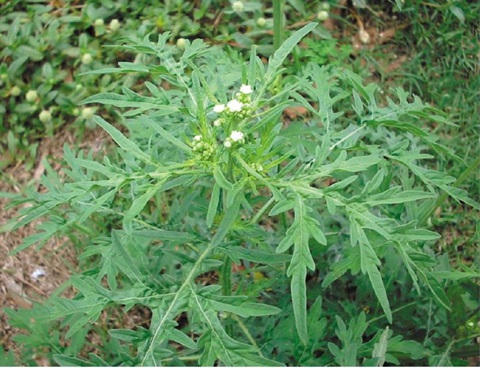Be wary of Parthenium Weed
Published on 10 June 2020

Goulburn Mulwaree Council is urging local landholders to be vigilant as Parthenium Weed (Parthenium hysterophorus) incursions have been identified in fifteen regions of NSW. The weed is identified as a significant biosecurity risk in NSW and is prohibited under the NSW Biosecurity Act 2015.
It is reported that all sites where incursions have been identified are related to livestock feeding areas during the drought and transported machinery from interstate. With the drought conditions that were previously being experienced across the Goulburn Mulwaree area and the continued importation of feed and fodder into the region, it is more important than ever that everyone keep an eye out for new incursions of weeds, particularly these weeds not previously identified in our area which pose a serious biosecurity threat.
Parthenium Weed grows and spreads rapidly, is dangerous to grazing animals and reduces crop and land values. Parthenium Weed outcompetes other plants and pastures by taking available nutrients and moisture and releasing chemicals into the soil that inhibit the growth of other species. Spreading via seeds, Parthenium weed is a significant issue with buried seeds remaining dormant for many years and each plant can produce up to 15,000 seeds.
Parthenium Weed:
- Causes human health problems
- Is unpalatable to stock
- Outcompetes degraded or drought affected pastures
- Reduces carrying capacity
- Causes livestock health problems
- Competes with crop seedlings including sunflowers and sorghum
- Reduces crop yields
- Contaminates grain
- Is a host for crop viruses.
Contact with the plant or pollen can also cause serious allergic reactions, respiratory problems and severe dermatitis in some people.
Landholders are advised not to touch the plant with bare hands and to use a dust mask if working near the weed. People might not have an allergic reaction the first time they touch a plant. Allergies can develop after a few exposures
More information about Parthenium Weed and how to identify the plant at different growth stages is available from NSW DPI https://weeds.dpi.nsw.gov.au/weeds/partheniumweed.
If you sight or think you may have identified an incursion of Parthenium Weed please do not touch or remove the weed and contact Goulburn Mulwaree Councils Biosecurity Weeds Department as soon as possible on 02 4823 4444.